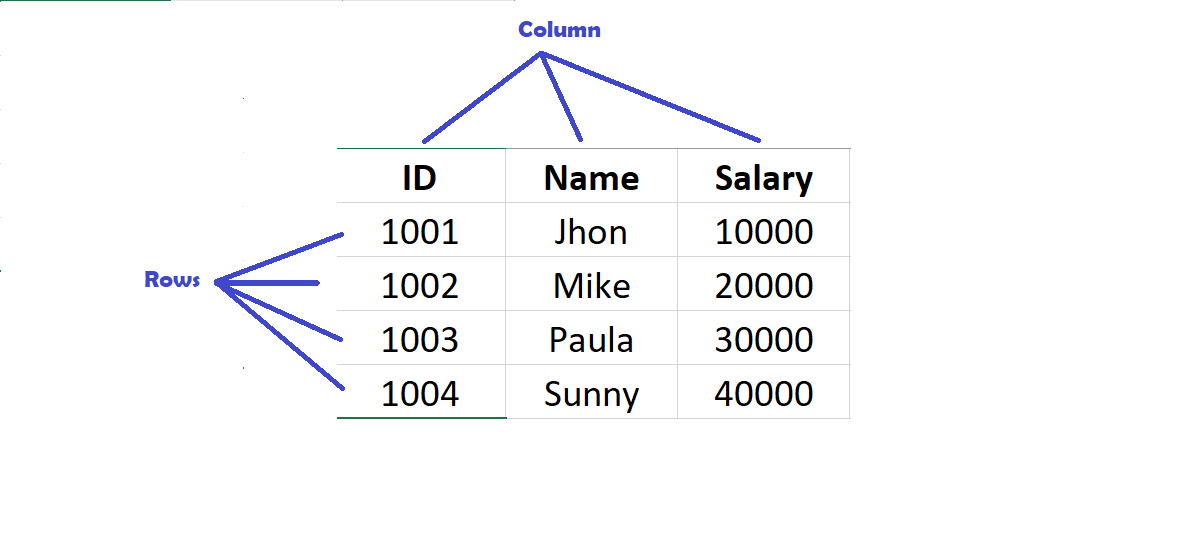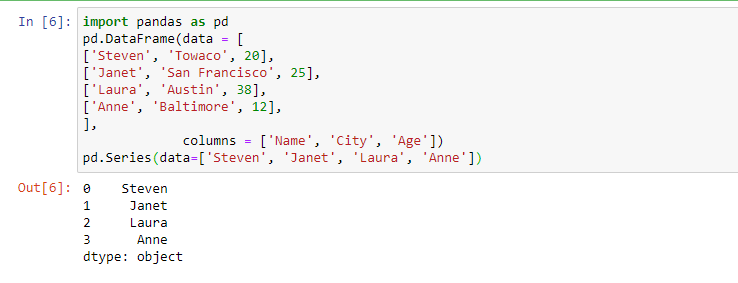Pandas is an open-source library that is built on top of NumPy library. It is mainly popular for importing and analyzing data much easier. Pandas is fast and it has high-performance & productivity for users. It provides many functions and methods to expedite the data analysis process. In this post, I will explain 10 pandas functions with examples. Some of them are so common that I’m sure you have used before… Read More »Commonly Used Functions in Pandas
Python
Python is an high level, interpreted, general-purpose programming language. It’s based on design philosophy that emphasizes highly on code readability. It supports structured, object-oriented and functional programming paradigm. It has gained popularity due to its ease of use and collection of large sets of standard libraries.
Pandas is an open source, BSD-licensed library providing high-performance, easy-to-use data structures and data analysis tools for the Python programming language. Pandas introduces two new data types to Python: Series and DataFrame. Visit here to know about DataFrame and how to Create DataFrame. Sometimes data are available in millions or billions or even more than that. And you don’t want to see the whole data, you glimpse of data of what… Read More »Pandas Head() & Tail() Functions
Pandas Head() & Tail() Functions
Pandas is the most preferred Python library for data analysis. The reason is its core data structure called DataFrame, one of the two basic data structure of Pandas. It’s 2-dimensional labeled data structure with columns of potentially different types. DataFrame is a widely used data structure of Pandas and works with a two-dimensional array with labeled axes (rows and columns). Defined as a standard way to store data and has… Read More »Python Pandas DataFrame & Different Ways to Create Them
Python Pandas DataFrame & Different Ways to Create Them
Pandas is a one of the most popular software library extension of Python. Wes McKinney designed it in 2008. It helps manipulate and analyze stored data. “Pandas” stands for Panel Data, which means an Econometrics from Multidimensional data. According to the official pandas documentation, it is “a Python package providing fast, flexible, and expressive data structures designed to make working with “relational” or “labeled” data both easy and intuitive. Pandas… Read More »Introduction to Pandas in Python
Introduction to Pandas in Python
In simple words, iterator is an object that can be iterated upon. They contain more than one data in it. Commonly used Python iterators are list, tuple and dictionary. An iterator will return data from that object, one item at a time. Any Python iterator must implement two methods: The __iter__ method which returns the iterator object The __next__ method which return the next value for the iterable. How Does Iteration… Read More »What are Iterators in Python
What are Iterators in Python
A Conditional Statements is a statement that checks for a Boolean condition. It decides whether the block of statement will execute or not. If the condition evaluates to TRUE a section of code will execute. There are various types of conditional statements in Python, let’s discuss one by one along with their syntax. Basic Syntax of Conditional Statements [conditional] : Any condition based on a combination of one or more… Read More »Conditional Statements in Python
Conditional Statements in Python
Python is important for software development or machine learning. Compared to other programming languages, Python is great for a number of reasons.The elegant design and syntax rules of this programming language makes it quite readable even among multi programmer development teams. Lets Find out what are the things that makes Python stand out among programming languages. 1. Easiest Programming Language in the World Python is famous for its simplicity, readability… Read More »Advantages of Learning Python
Advantages of Learning Python
Problem Statement Write a function that reverse a string. Input string will be given as an array of characters char[]. Can you to it without allocating extra space for another array? Hint: You must do this by modifying the input array in-place with O(1) extra memory. You may assume that all the characters comprise of printable ascii character. Examples: Example 1: Example 2: Let’s see how to solve this question.… Read More »Optimized way to Reverse a String | Leetcode Challenge #344
Optimized way to Reverse a String | Leetcode Challenge #344
Longest repeated substring problem is a problem of finding the longest substring that occurs at least twice in a given string. This is also one of the important interview questions. Problem Statement Given a string S, consider all duplicated substrings: (contiguous) substrings of S that occur more than once. (The occurrences may overlap.) Return any duplicated substring that has the longest possible length. (If S does not have a duplicated substring, the answer is "".) Example 1: Input: “banana”, Output: “ana” Example… Read More »Longest Repeated Substring Problem
Longest Repeated Substring Problem
Slicing is extraction of a part of a sequence like list, tuple, string. It can fetch multiple elements with a single statement. It does not remove the values from the iterable; instead makes a new object with the desired elements. Syntax start – Starting integer where the slicing of the object starts. Default to None if not provided. end– Integer until which the slicing takes place. The slicing ends at index end – 1… Read More »A Complete Guide on List Slicing and slice() Method of Python

